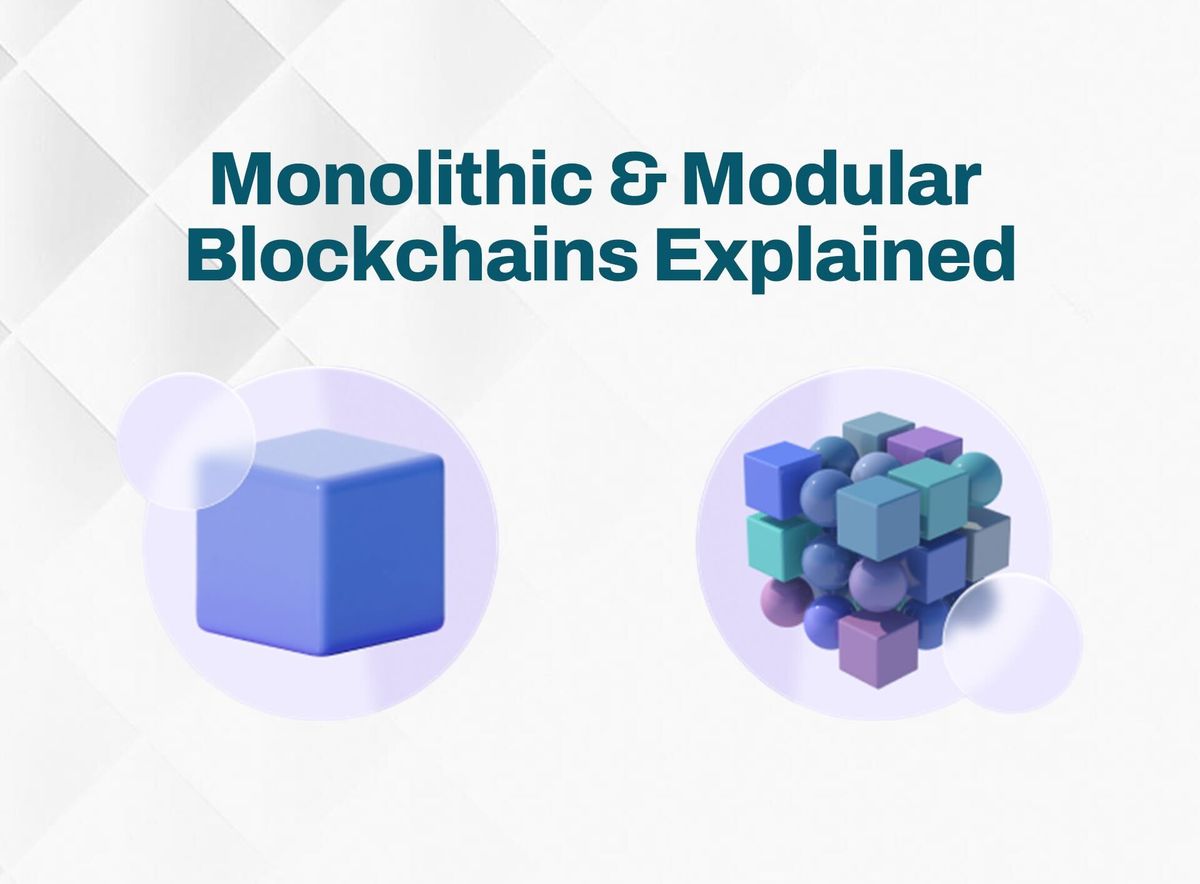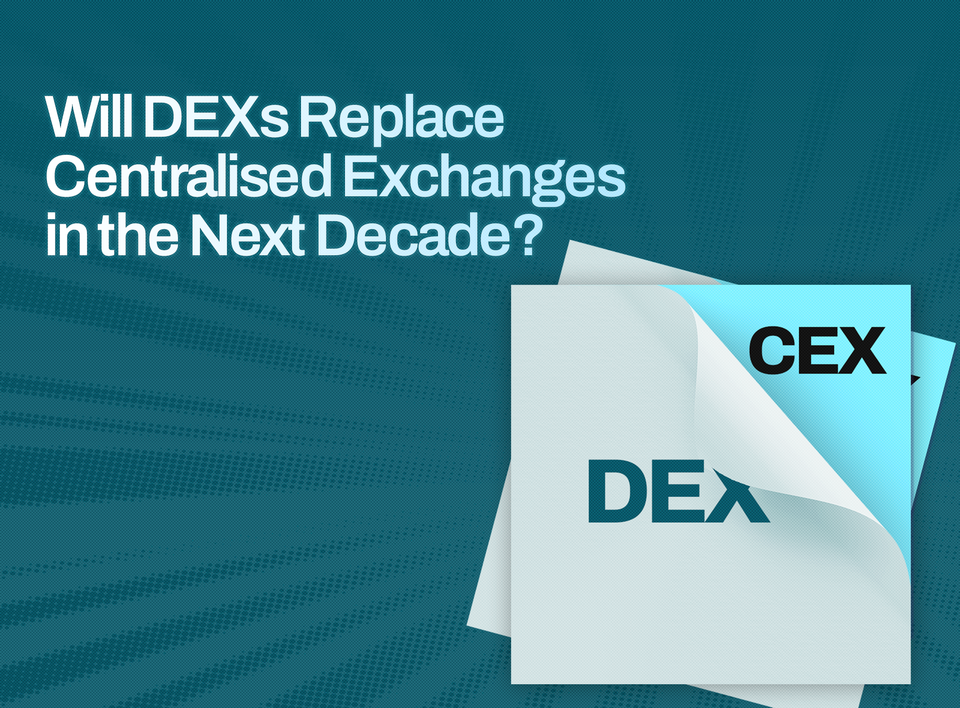Monolithic & Modular Blockchains Explained
Modular blockchain specialises in performing one or two of the blockchain's three main functions, while monolithic blockchain performs all functions.

Primarily, blockchains were built with the ability to carry out multiple important functions, and while this became the norm for building them, it can't be denied that it made these blockchains substandard.
However, lately, developers are beginning to see an alternative: building new blockchains that can separately handle one or a few of those functions effectively.
Maybe you've encountered monolithic and modular blockchains before, or perhaps this is your first time seeing them. Either way, this article aims to enlighten you on what they both are.
So, sit tight as we go on a joy ride—okay, maybe not a joy ride, but sure, an insightful ride into monolithic and modular blockchains.
What is a Blockchain?
Before we begin, let's briefly recap what a blockchain is. A blockchain is a system in which records of (crypto) transactions are processed and permanently stored across various computers (nodes). A blockchain is typically a chain of digital blocks which stores crypto transactions.
To comprehend the designs of a monolithic and modular blockchain, we have to understand its workings in general, and doing this implies explaining its core concepts.
The Three Core Concepts (Functions) Of a Blockchain
There are three main concepts, also referred to as functions for which a blockchain is generally known to handle.
These core concepts are:
- consensus
- data availability
- execution.
1. Consensus: This is the part of the blockchain that ensures that all nodes agree on what transactions will be processed and the mode of validating each transaction. This is where the PoW, PoS, and other consensus mechanisms come in.
2. Data Availability (DA): This is the part of the blockchain that ensures that the data nodes need to validate transactions is made available for them. Nodes can access transaction data because it is made available.
3. Execution: This is the smart contract part of the blockchain, which involves processing and executing transactions in the network.
All these concepts are essential in the blockchain network, and that's why the blockchains built before now require the nodes (network participants) to handle all of them.
Now, we can get to the main topic of this article.
What is a Monolithic Blockchain?
Monolithic, typically, implies a single, unified structure.
A monolithic blockchain is a blockchain that is built with the ability to carry out all the core functions (consensus, DA, execution). Monolithic blockchains are built in such a way that one layer handles everything from consensus to execution to data availability.
Examples of Monolithic Blockchains
1. Bitcoin: The first known blockchain, launched in 2009, is monolithic. Bitcoin handles all the earlier-mentioned functions by itself. It is a very secure network and one of the most decentralized.
2. Ethereum: Known for its high gas cost and the large number of innovative projects built on it, Ethereum is a fully decentralized and secured monolithic blockchain with a single layer that performs all the core functions.
3. Solana: Launched in 2020, it has been dubbed the "Ethereum killer" because of its promises to improve scalability, which seems to be Ethereum's current issue. Solana is a monolithic blockchain because it carries out execution, consensus, and DA, all on a single structure.
Other examples of monolithic blockchains include Dogecoin, Binance Smart Chain, Algorand, TRON, Litecoin, etc.
NOTE: All of the above-mentioned blockchains are regarded as monolithic if you don't consider their utilization of layer 2s.
More than 75% of monolithic blockchains are secured and decentralized while being less scalable. Bitcoin, for instance, is known to be capable of handling only 7 transactions per second (tps). Ethereum can handle 15 - 20 tps. This is because monolithic blockchains have only one layer handling three heavy functions, so they can't risk being compromised. So, security is of the utmost importance.
Also, blockchain technology promised to introduce a trustless and open system for users, so decentralisation is vital as well.
This leaves developers no choice but to ditch scalability because, traditionally, a blockchain can't be 100% secured, 100% decentralized, and still 100% scalable. This theory is termed the blockchain trilemma.
Blockchains can only carry out a small number of transactions in order to perform all functions while remaining secure and decentralized. This is why they resort to external assistance like layer 2s (e.g., Polygon for Ethereum, Lightning Network for Bitcoin, etc.) and even on-chain solutions like sharding to help solve the scalability issue.
With sharding came the knowledge that a blockchain can be split into various, separate, independent units. This introduced the idea that one blockchain doesn't really have to do it all. Thus, the idea of modular blockchains was birthed.
What is a Modular Blockchain?
A modular blockchain is a blockchain which handles one or a few of those aforementioned core functions while outsourcing the rest.
Modular blockchains specialize in specific functions (either execution, DA, or consensus) and do not attempt to do it all. With these types of blockchain, specialisation is key, and this helps improve their scalability because tasks are reduced, so there's basically more space and time to process more transactions.
Examples of Modular Blockchains
1. Celestia: this is the first modular blockchain that specializes in providing data availability and consensus for other blockchains looking to deploy. It doesn't deal with execution.
2. Fuel Network: a modular blockchain that focuses on execution.
3. Rollups: These are layer 2s designed to act as modular blockchains. They specialise in execution. Arbitrum, Zksync, and Optimism are a few samples of rollups.
4. Syscoin, etc.
To Round Up: Monolithic Blockchains vs Modular Blockchains
In essence, modular blockchain differs from monolithic blockchain in that the former specialises in performing one or two of the blockchain's three main functions, while the latter generalises in performing all.
Disclaimer: This article was written by the writer to provide guidance and understanding of web3/blockchain/cryptocurrency. It is not an exhaustive article and should not be taken as financial advice. Obiex will not be held liable for your investment decisions.



